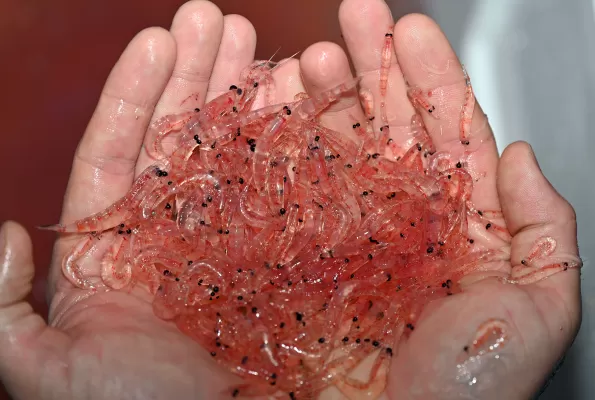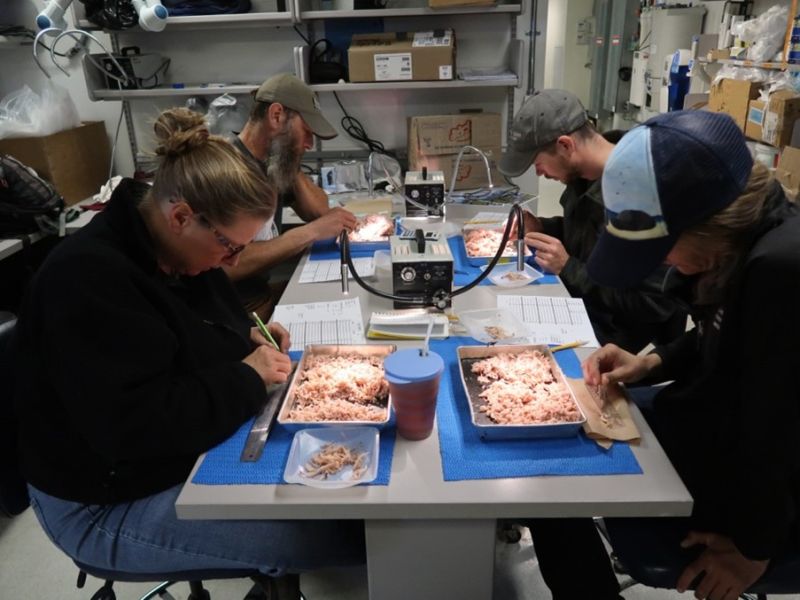
Antarctic krill: Superheroes of the Southern Ocean
Happy World Krill Day! Learn about a small marine creature that does big things for the planet
What exactly are krill, and why are they getting attention?
Krill is a general term used to describe a group of about 86 species of small shrimp-like crustaceans found throughout the world's open oceans. While they may be small — generally about the size of your thumb — they play an important role in the food web.
For example, Euphausia superba, or Antarctic krill, is a species only found in the Southern Ocean and is arguably the most important animal in its ecosystem. As a keystone species, Antarctic krill provide the basis of the diet for most marine mammals and seabirds and play a critical role in drawing down and storing vast quantities of carbon in the Southern Ocean. Antarctic krill are also economically important, as they are the focus of the largest fishery in the Southern Ocean.
However, Antarctic krill are under threat. The combined effects of ocean warming, sea ice loss and ocean acidification are negatively impacting krill survival and reproduction.
NSF-supported Antarctic krill research
The U.S. National Science Foundation has supported Antarctic krill research for multiple decades, spanning various topics including their role in the Antarctic food web, population dynamics, carbon sequestration and fisheries.
Recent research has focused on the impacts of climate change on Antarctic krill.
In a 2021 study, led by scientists at Oregon State University found that the reproductive success of Antarctic krill are significantly affected by climate conditions. Using 15 years of population data, researchers found that large-scale climate patterns and seasonal variations are the main drivers of the health of mature female krill during the spawning season.
Krill have a complex life cycle that requires a balance of conditions. To survive winter, they need sea ice for shelter and the food it provides, as they feed on the algae that live on and inside the ice. With the Western Antarctic Peninsula warming at a rate faster than most places on Earth, Antarctic krill are being affected during their earliest life stage when they are most vulnerable to environmental conditions.
These changes also affect species that rely on krill for food such as Adélie and chinstrap penguins. If warming in the Western Antarctic Peninsula continues, it's projected that winter sea ice will disappear, furthering the declines in krill and penguin populations.
To truly understand and predict the implications of climate change on the Antarctic krill, studies on overwinter survival are needed, and the team at Oregon State, through NSF's Faculty Early Career Development Program, is addressing these gaps in knowledge.
In a 2022 study, the team looked at how the sexual maturation of juvenile krill respond to different environmental conditions in the Western Antarctic Peninsula, as most of the winter research in the region has been on larvae and adults. After exposing krill to four different environmental food scenarios that they may encounter in the Western Antarctic Peninsula, they found that juveniles use both adult and larvae strategies to survive the winter. They will feed during the winter when food is available similar to larvae and will use their lipid (oil) reserves if food is scarce just like adults.
This flexibility allows females to initiate early sexual maturation. However, since this is a very energy intensive process, it comes at a cost. The team found that as the females matured, their overall health declined, which may leave them more susceptible to harsh environmental conditions. Understanding their winter survival mechanisms will further help to predict how climate change in the Western Arctic Peninsula will impact Antarctic krill.
NSF also funds the Long-Term Ecological Research site at Palmer Station in Antarctica and has been investigating the marine ecosystem in the region since 1992.
A 2023 study used a 21-year time series in the Western Antarctic Peninsula from Palmer Station to understand the relationship between krill body size and the export of carbon in the Western Antarctic Peninsula. Antarctic krill play an important role in this process, as they eat vast quantities of phytoplankton and excrete the carbon-rich remains in the form of fecal pellets that sink to the seafloor.
The findings showed that the export of carbon is directly related to the size and age of krill which can live for five to six years. This suggests that yearly fluctuations of carbon export are linked to the life cycle of Antarctic krill. This makes sense because the larger the krill, the larger the fecal pellet or carbon content produced. Climate change could alter the five-year cycle of krill growth, thus altering carbon export and carbon storage in the deep sea.
These are just some of the many research projects on Antarctic krill that NSF supports. Recognizing their ecological importance in the Southern Ocean is one of the motivations for designating a global day to celebrate Antarctic krill.
So put on a party hat and raise a glass to this perfect, amazing creature on this very special World Krill Day.






